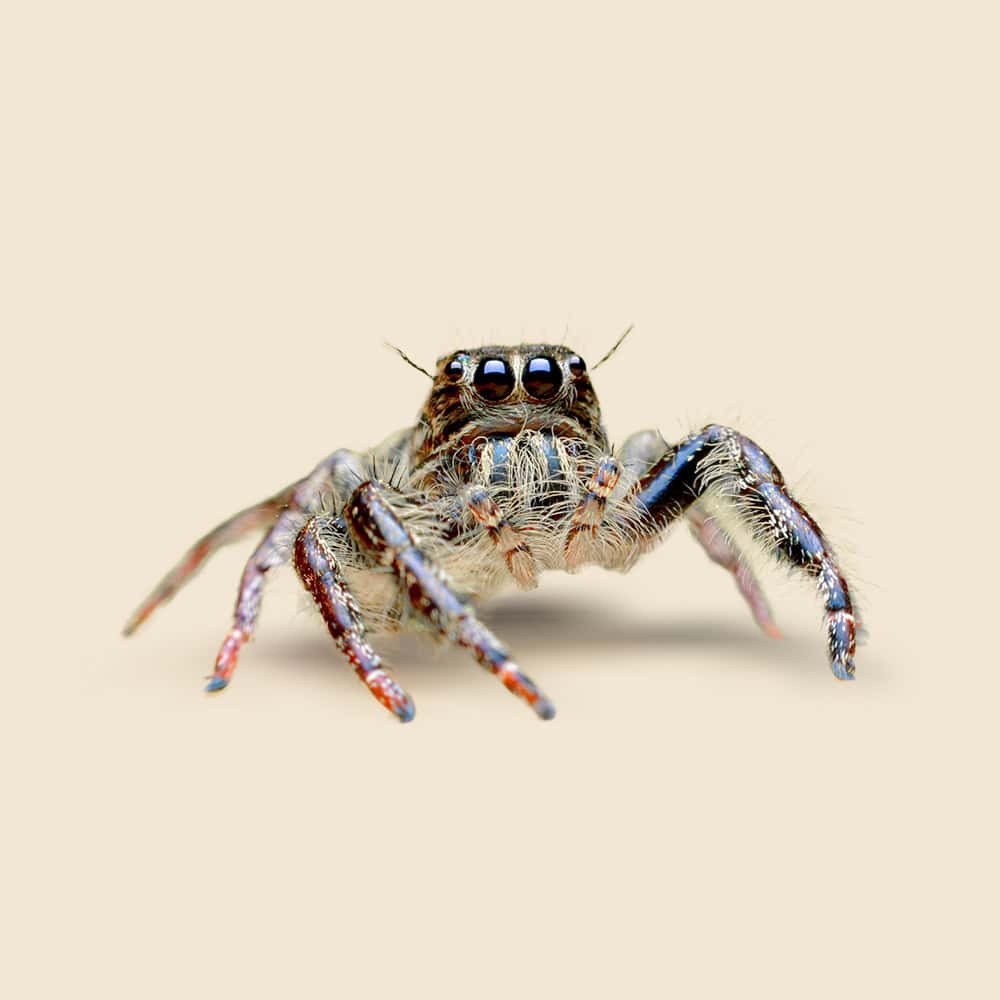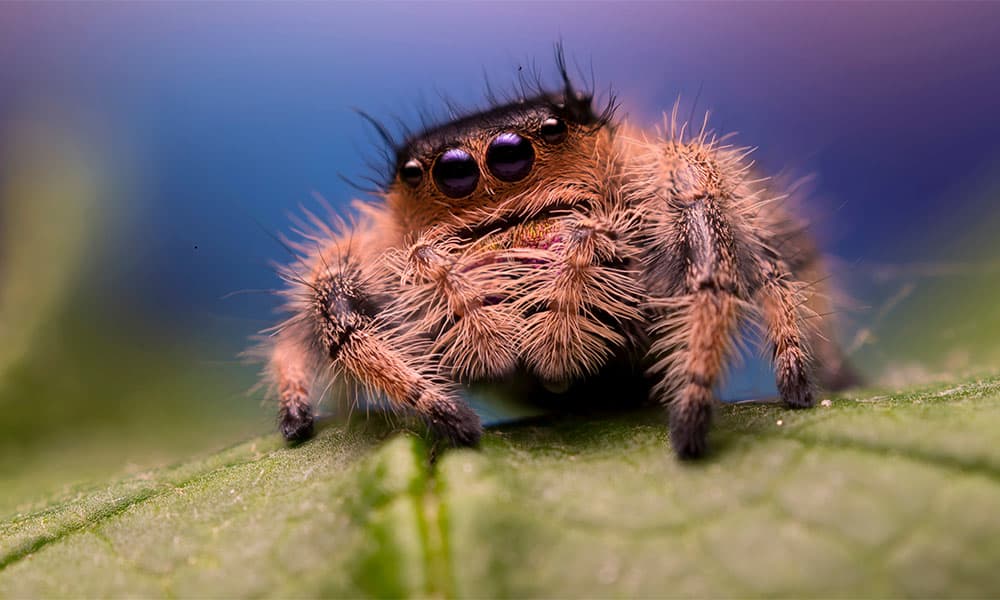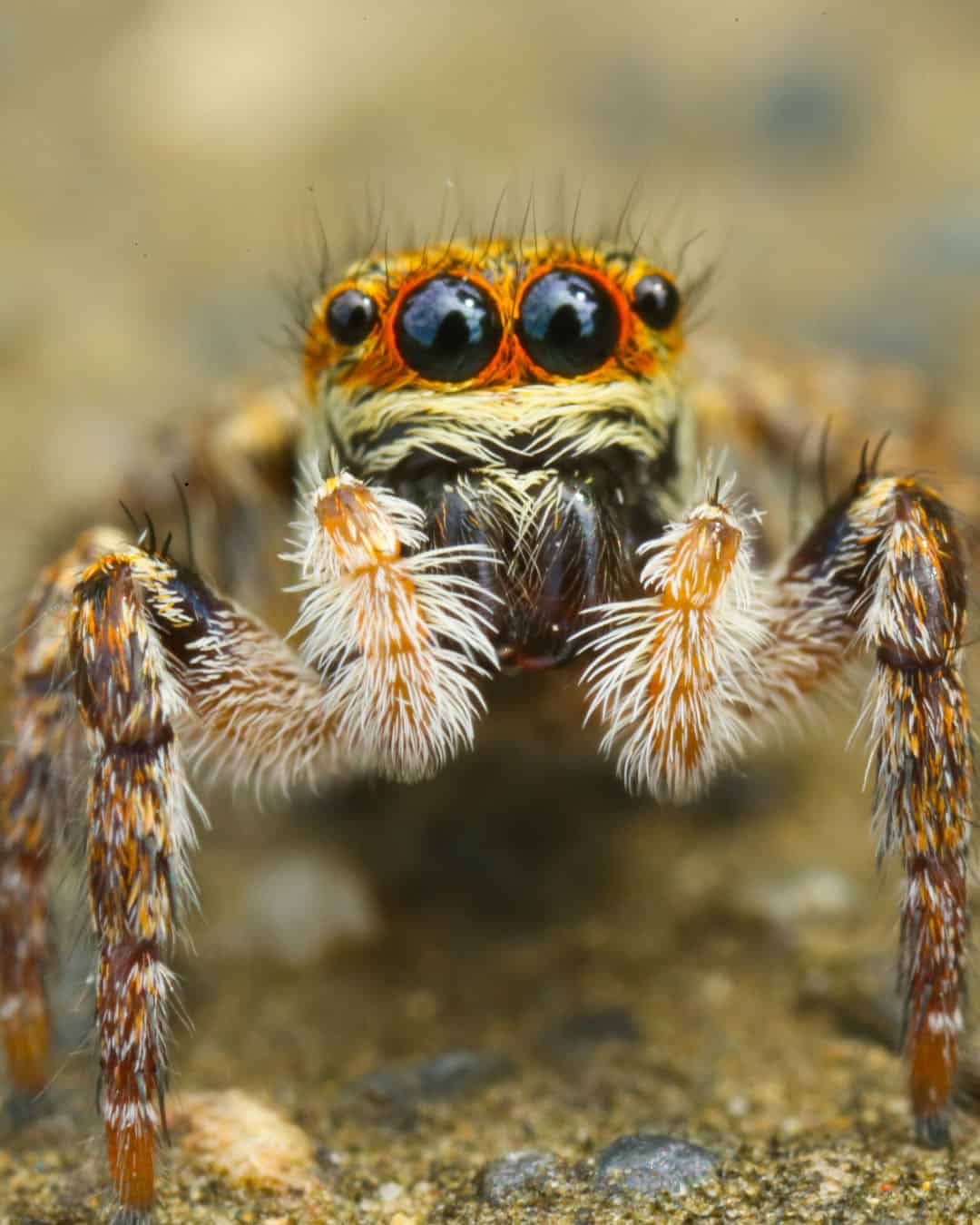Jumping Spider Facts & Information
Jumping spiders are small, energetic arachnids known for their impressive agility and sharp vision. Unlike many other spiders, they don't rely on webs to catch their prey but use their exceptional jumping ability to pounce on insects. While they're generally harmless to humans, their presence can be startling indoors.

Salticidae
What You Need To Know About Jumping Spiders
What do jumping spiders look like?
Jumping spiders are small to medium-sized, usually measuring between 1/8 to 3/4 of an inch in length. They have a compact body with short legs, and their most notable feature is their large, forward-facing eyes that give them excellent vision. Jumping spiders come in various colors, including black, brown, and sometimes iridescent or metallic shades.
What do jumping spiders eat?
Jumping spiders are carnivorous, feeding primarily on insects such as flies, mosquitoes, and moths. Unlike web-building spiders, they actively hunt and leap onto their prey, using their excellent vision and quick reflexes.
What sort of habitat do jumping spiders live in?
Jumping spiders are highly adaptable and can live in a wide variety of environments, including gardens, forests, grasslands, and even inside homes. They are often found on walls, fences, and plants, where they can hunt for insects. They prefer sunny, open areas where their vision works best.
How do jumping spiders commonly behave?
Jumping spiders are active hunters who stalk and pounce on their prey rather than catching it in webs. They are known for their remarkable agility and precision when leaping. Though curious, they are not aggressive toward humans and rarely bite unless provoked.
Did you know this about jumping spiders?
Jumping spiders have some of the best vision among all arachnids, with their large central eyes giving them depth perception. They can also leap up to 50 times their body length, using a silk thread as a safety line to ensure they don’t fall. Additionally, jumping spiders perform elaborate courtship dances to attract a mate.
Understanding Jumping Spider Infestations
Understanding jumping spider infestations helps in effectively managing them. These spiders are typically black, gray, or brown and often have bright markings. They have compact, stocky bodies and large eyes that give them excellent eyesight, which they use to hunt during the day. Jumping spiders are not web-builders; instead, they stalk and leap at prey such as flies and small insects. They’re often found outdoors in gardens, but they can enter homes through windows or small gaps in search of food or warmth.

How Hearts Handles Jumping Spider Treatment
Hearts Pest Management employs an integrated pest management approach to handle Jumping Spider infestations.
Jumping Spider Inspection
Jumping Spider Treatment
Jumping Spider Prevention
Educational Resources

Think You Might Have a Jumping Spider Infestation?
At Hearts Pest Control, we understand the challenges associated with Jumping Spider infestations and are here to provide professional solutions tailored to your needs. Flourishing in warm and humid climates, they are prevalent in many regions, including San Diego County, Orange County, and Los Angeles County.